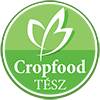With the support of our stable Hungarian producer base, this vegetable is always available in high quality in our wholesale assortment – ask us for an offer!
The pritamin pepper is a sweet, thick-fleshed variety of bell pepper that is particularly popular in Central and Eastern Europe. Its deep red colour, intense aroma and pleasantly sweet flavour make it a favourite of many, and it can be used in many dishes in the kitchen. Its name comes from the Latin name ‘Capsicum’, while the name ‘pritamin’ refers to the high vitamin content (especially vitamin C).
Not only are pritamin peppers delicious, they are also extremely healthy: they are an excellent source of vitamin C, with some varieties containing more vitamin C than lemons. It is also rich in vitamin A, antioxidants and fibre, helping to strengthen the immune system, maintain good vision and digestion.
Its economic importance is also noteworthy, especially in Hungary, where it has been grown for a long time, mainly in the counties of Békés, Csongrád-Csanád and Bács-Kiskun. In Europe, Spain, the Netherlands and Hungary are among the largest producers. Pritamin paprika is a sought-after product on the fresh market and in the food industry, where it is used to make puree, lecho, condiments and is often eaten stuffed.
Specificities of the production of pritamin pepper
The pritamin pepper is a heat-loving plant that thrives best in sunny, sheltered areas. It can be grown both outdoors and in greenhouses, but the best, sweetest specimens are usually grown outdoors. Under greenhouse conditions, cultivation can start in the spring months, while field-grown peppers tend to mature from mid-summer to autumn.
Spain is the largest producer in Europe, especially in the Almería region, where they can produce peppers all year round in modern greenhouses. In Hungary, the season lasts from July to October, when you can find a home-grown, outdoor crop in the shops. During the winter months, the peppers on the shelves are typically imported from Spain, the Netherlands and North Africa.
How to choose a good quality pritamin pepper?
When buying a pepper, it is worth looking carefully at its appearance, as this tells you a lot about its freshness and quality. The following aspects should be taken into account:
- Colour: Good quality pritamin peppers are bright, deep red in colour, with occasional darker shades. Pale or mottled colouring may indicate overripeness or spoilage.
- Texture: the peppers should be firm and firm to the touch. A soft, wrinkled surface indicates that the vegetable has lost moisture.
- Peel: It should be smooth, shiny, without cracks or browning.
- Stem: A green and fresh stem is a sure sign of freshness.
How to use pritamin pepper in the kitchen?
The pritamin pepper has many uses in the kitchen. It is particularly popular in Hungarian cuisine, where it is often used in lecsó, stuffed peppers, roasted vegetables and salads. Its sweet flavour also makes it an excellent choice for fresh consumption, for example in sandwiches or dips.
- The flavour is even more intense when grilled or baked, and it goes well with meat as a side dish.
- Blended into a smoothie, it makes a delicious cream soup.
- It can also be kept for longer if dried or pickled.
- It can be combined with other vegetables such as aubergines, courgettes or tomatoes.
How to store pritamin peppers?
Pritamin peppers are relatively sensitive to storage, so it is recommended that they are kept under suitable conditions.
- Stored in the vegetable compartment of the refrigerator, it will keep fresh for 5-7 days.
- Do not wash in advance, as moisture can promote spoilage.
- Store in paper bags or loosely in nylon bags to reduce moisture accumulation.
- Chopped and frozen, it will keep for months, although it will lose some of its texture.
Interesting facts about the pritamin pepper
- The vitamin C content of pritamin capsicum can reach 150-200 mg per 100 g, well above the recommended daily intake.
- The pepper originated in the Americas and was introduced to Europe by Columbus in the late 15th century, from where it gradually spread across the continent.
- In Hungary, the pritamin paprika became popular from the beginning of the 20th century, especially because of its home preservation (canning, pickling).
- Eaten raw, it is not only healthy but also helps detoxify the body thanks to the antioxidants it contains.
Tips for using pritamin paprika in the kitchen
- If you grill it, brush it with olive oil beforehand so it doesn’t dry out and stays nice and shiny.
- When making lechos, use pritamin paprika instead of the classic TV paprika, because its sweeter taste makes the dish more delicious.
- For stuffed peppers, choose the larger pieces as they are easier to fill and hold their shape better when cooking.
- When pureed, it is also excellent in sauces, such as pasta sauces or creams.
- Leave to rest in a cool place for 1-2 days before pickling to allow it to fully ripen and release its sweet flavours.


